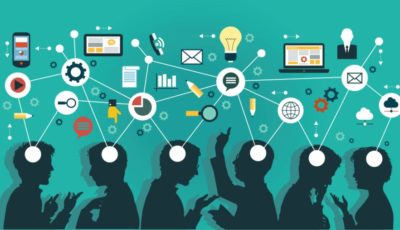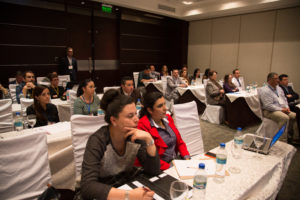The Future of Work: Impact of the Fourth Industrial Revolution
A report published by the World Economic Forum in the beginning of this year looks at how recent developments in genetics, artificial intelligence, robotics, bio- and nanotechnology, the Internet of Things and 3D printing, to name but a few, have impact on the dynamics of workforces globally. The so-called Fourth Industrial Revolution and its powerful breakthroughs modify the relationship between people and technology in a way that more talent is needed in certain job categories whilst high skills instability is evident across almost all of them. The most important question is how governments, business and academia can adapt in order to react and prepare future employees for the potential talent shortages, mass unemployment and growing inequality.
The research was conducted among leading experts from academia, international organisations, professional service firms and heads of human resources at major companies. Chief Human Resources Officers (CHROs), senior talent and executives of some of the largest global employers across 9 broad industry sectors were asked to imagine how the respective roles would change by 2020 and what the future risks and opportunities might be that employees should consider. As the progress in various areas and smart systems is accelerating, entire industries will need to adjust in order to stay competitive. While some jobs are becoming obsolete and others evolve rapidly, existing roles are also going through a transformation of the skill sets required to perform them. The CHROs were asked for their opinions on what the current shifts would mean for employment, skills dynamics and recruitment across industries and geographies.
As a result, the term “skills stability” has been introduced to help quantify the degree of skills disruption within an occupation, a job family or a whole industry and also to what extent re-skilling and up-skilling of workers is needed in order to address talent shortages, mass unemployment and growing inequality. For instance, the advances in robotics and machine learning are likely to substitute tasks that were previously performed as part of existing occupations, allowing workers to focus on new tasks and leading to fast-changing skill sets in these areas. The drivers of change related to the skill sets across industries have been classified into two major categories: demographic and socio-economic and technological.

The complete definitions of each driver are described in the report, with the top trending ones being:
- Changing work environments and flexible working arrangements – 44%
- Mobile internet and cloud technology – 34%
- Advances in computing power and Big Data – 26%
- Rise of the middle class in emerging markets – 23%
- Climate change, natural resource constraints and the transition to a greener economy – 23%
- New energy supplies and technologies – 22%
All of the explored factors lead to imminent changes in people’s lifestyles and resemble what the industry observers call a Fourth Industrial Revolution. When combined together, the technological, socio-economic, geopolitical and demographic developments and the relations between them will create new categories of occupations, transforming work habits, locations, management styles and regulations crucial to the everyday performance of tasks.
Skills Audit
Naturally, as there is a need for modification of the existing skills sets, academia should respond by adapting qualifications and degrees accordingly. A good example is the rapid advancement in the field of technology – 50% of the subject knowledge obtained during the first year of a four-year long technical degree becomes outdated by the time students graduate. This means that if institutions keep their focus on traditional formal qualifications and hard skills, a huge part of the existing curriculum content will cease to be relevant in just a few years. What is more, in the majority of cases employers are more concerned about the work-related practical competences employees possess in order to adapt to and perform a variety of job tasks successfully. The report outlines 35 core soft skills that are very common across different industry sectors and job families and notes that they will also change significantly in the immediate future. It is predicted that by 2020 more than a third of the currently desired core skill sets of most occupations will be replaced by skills that are not yet considered to be important.

As evident from the table below, by 2020, more than a third (36%) of all jobs across different industries would require complex problem-solving skills, in contrast to physical strength, which is expected to represent a mere 4% of the basic job requirements. Across different industries, social skills (e.g. persuasion, emotional intelligence and teaching others) will prevail over technical skills (e.g. programming or equipment operation and control). Content skills (e.g. ICT literacy and active learning), cognitive abilities (e.g. creativity and mathematical reasoning) and process skills (e.g. active listening and critical thinking) are also expected to significantly grow in importance as core sets of requirements for many industries.

At industry level, current trends could lead to a total loss of 7.1 million jobs in the period 2015-2020 due to disruptive labour market changes. The highest proportion of these or nearly two thirds are expected to be in the Office and Administrative job family, followed by Manufacturing and Production and Construction and Extraction. On the other hand, growth is expected for the Architecture and Engineering job family, Computer and Mathematics, centred on data analysis and software and application developers, the Business and Financial Operations and Management fields.
The sector with highest skills stability is expected to be Media, Entertainment and Information and the one to undergo the most changes – the Financial Services & Investors sector.
Rethinking Education Systems
Having examined all the factors that are defining and shaping skills across various industries, it is clear that environments change quite fast and there is a need to adapt and meet the challenges of an increasingly demanding workplace. Most companies prefer to take a proactive approach in training their human capacity internally as for some fields this proves to be the more effective solution. In general, employers view current education systems as outdated and incapable of providing the skills required for a growing number of jobs. By a popular estimate, 65% of children in primary schools nowadays would be working in areas and functions that do not yet exist. Following the transformations triggered by the Fourth Industrial Revolution, many cross-functional roles will emerge, expecting employees to possess a mix of skills combining both technical and social competences.
Most of the existing education systems are based on practices from the 20th century that do not meet contemporary talent requirements or labour market challenges. Another issue with formal education is also the division between Humanities and Sciences and applied and pure training on one side, and the focus on prestige, rather than content of learning, on the other. Furthermore, employers are more and more interested in practical skills that traditional education fails to address and also it is worth noting that cognitive abilities take much longer to develop. All these points reflect the need for companies, governments and academia to work together in order to introduce new models of education delivery. It is interesting to state that in planning their future workforce strategies, the majority of respondents consider as a priority investing in re-skilling current employees, rather than relying on external collaboration, apprenticeships or short-term hires. If working side-by-side, business and education providers could proactively build the future talent generation by adopting a modern, 21st century style curriculum.
Another major and crucial factor that further emphasises the need for change in learning is the ageing population of the world. Even if evolving skill sets are taken into account by institutions, simple reforms in education systems might not be enough to prepare students for the reality of future work environments. Lifelong learning should be combined with re-skilling of existing employees to make sure they stay competitive. A good example of government involvement in this sense is Denmark. The country provides certification and funding for two-week skills training sessions to adults and also encourages in-work training as part of its workforce development strategy. As a result, the country has very high levels of employment mobility with 70% of workers being very positive about mid-career transitions compared to the EU average of 30% and less.
***
What impact will the Fourth Industrial Revolution have on Latin America? Are you curious to find out more about the future of jobs and higher education in what is predicted to become the third largest global region for student recruitment by 2035? Then join the ETN Focus Workshops tour in Latin America this September and take the chance to make a difference for LATAM students as well as for your institution.
Apart from the opportunity to explore, understand and recruit local talents through collaborating with qualified agents, you will also participate in our expertly curated ETN Talks and expand your knowledge on topics of strategic importance for student mobility in the region, including the Fourth Industrial Revolution and the implications it carries for the local education and employability climate.
While there is still plenty of room for improvement, Latin America has started to experience growth in entrepreneurship and local people are striving to take their future into their own hands more than ever before.










































